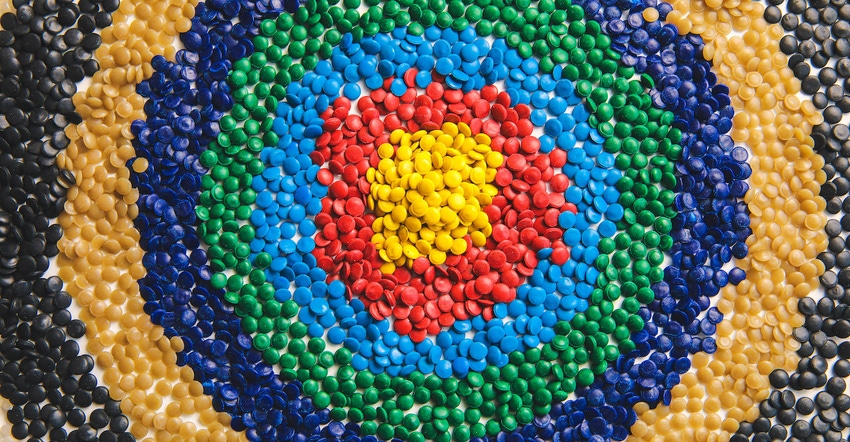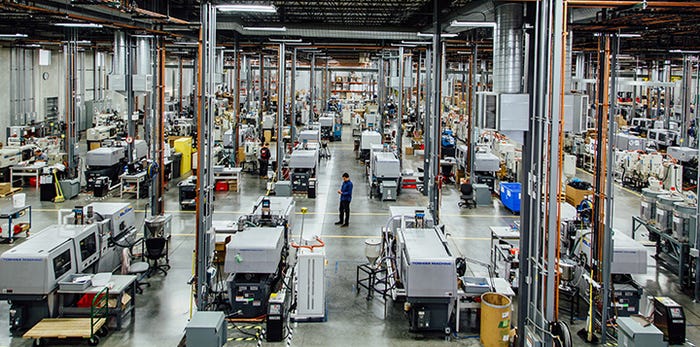Running into Resin Shortages? Here Are Five Plastic Alternatives to Consider When Designing Products
Substitutes are readily available, based on desired material properties and the function of the finished part.
May 15, 2021

Jack Rulander
Supply-chain disruptions have left no part of our industry untouched over the last year. While there is light at the end of the tunnel in our fight against COVID-19, it is apparent the fallout will continue for some time. The impact is only heightened with the recent Suez Canal blockage and a shipping container shortage.
The disruptions have combined to create a significant material shortage, increasing prices or downright halting the production of plastic-based components. Fortunately, the tremendous innovation we have seen in material development provides options for product developers willing to explore alternatives for commonly used resins.
During material shortages, substitution options are available based on desired material properties and the intended function of produced parts. (An extensive list is available on the Protolabs website.) Each lesser-known plastic could work as a replacement for commonly used plastics such as acrylonitrile butadiene styrene (ABS), polycarbonate (PC), and polypropylene (PP).
Polysulfone (PSU)
This resin is an amorphous, transparent, and pale-amber high-performance thermoplastic that exhibits good melt stability, which permits fabrication by conventional thermoplastic processing methods. PSU also has outstanding mechanical, electrical, and thermophysical properties, as well as excellent chemical and hydrolytic stability. The characteristics come together to make the resin a tremendous fit for components that are exposed to steam and hot water, like plumbing components, sterilizable plastic parts for medical devices, and membranes for water treatment, gas separation, and more.
Polyphthalmide (PPA)
Semi-aromatic polyamides like PPA are often a cost-effective alternative to the more expensive, fully aromatic aramids. Featuring a combination of aromatic and aliphatic groups, PPA greatly reduces moisture absorption, which results in few dimensional changes and more stable properties. The material is a great fit for products that must withstand prolonged exposure to harsher chemicals and higher temperatures. With that, common applications are motor parts, coolant pumps, bearing pads, resonators, and more.
|
A plastic resin shortage hasn't slowed down operations at Protolabs’ injection molding facility in Rosemount, MN. Image courtesy Protolabs. |
Polyphenylene sulfide (PPS)
PPS features a very high melting point and poor solubility, requiring special processing to manufacture parts out of the resin. But in the end, PPS has outstanding heat and chemical resistance, good dimensional stability, and high tensile and structural strength due to its aromatic ring structure. Parts made with PPS also feature flame-retardant capabilities and exceptional electrical properties, making it a widely used polythioether. Common applications include electrical and electronic parts, and mechanical parts in automobiles and precision engineering.
Polyphenylene oxide (PPO)
PPO touts excellent tensile and impact strength while showing resistance to many chemicals, including steam and water; however, it is sensitive to stress cracking. PPO also poses a problem with melt processing because of its high glass-transition temperature. With that, it is often blended with high-impact polystyrene (HIPS) to be used in applications across the automotive and electronics industry, including pump parts, fan impellors, catalyst supports, and more.
Syndiotactic polystyrene (SPS)
Known by its trade name Xarec, the plastic alternative is the first syndiotactic polystyrene (SPS) resin. The innovative structure allows for a variety of highly sought after characteristics. SPS is resistant to hydrolysis; chemically resistant to corrosion by various acids and alkalis, including automobile oil and antifreeze; and also resistant to heat. It also features a low specific gravity, reducing the weight and cost of parts. SPS is a fit for electronic components for various hybrid electric vehicles, as well as an essential component for everyday home appliances. Furthermore, it is viewed as a sound environmental choice.
We know it’s frustrating when a material supply is low — especially when you’ve designed molded parts for a specific plastic — but hopefully these alternatives can help you bridge your part design and manufacturing past the material gap.
About the author
Jack Rulander is a senior R&D engineer at Protolabs. He works on introducing new technologies to the company's digital manufacturing process for injection molding. Rulander has nearly 20 years of experience in the plastics engineering industry.
You May Also Like



